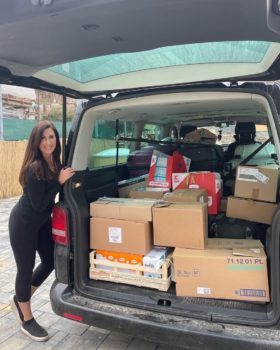
“Helping other people is a really important part of my life.”
When Jenna Engelsvold first arrived at Seattle Children’s as a nursing student more than a decade ago, she knew this is where she wanted to be.
“I was walking down the hall and looking around and just felt this gut feeling that this was where I wanted to start my career. To this day, I have never regretted that decision,” she explained.
As Engelsvold’s passion for pediatrics grew while at Seattle Children’s, so did her career, starting as a nurse in 2011 and then joining the nurse practitioner team in 2018 after completing graduate school. In her current role, she cares for patients who have undergone cardiac surgery and helps enable parents to take care of their child once they leave the hospital.
“Helping other people is a really important part of my life. I admire Seattle Children’s constant strive for excellence and for being open to change. I think that’s so important for giving our patients the best care that they deserve,” she added.
One of things Engelsvold also values most about working with pediatrics is her ability to be a strong advocate for those who are vulnerable and often cannot advocate for themselves.
A last-minute opportunity
Her deep-rooted mission to help others also extends beyond the hospital walls. In March, Engelsvold’s close friend who is originally from Ukraine, was organizing a trip to deliver more than 1000 pounds of medical supplies donated by MedShare to the country’s border and was looking for additional help from someone with medical knowledge.
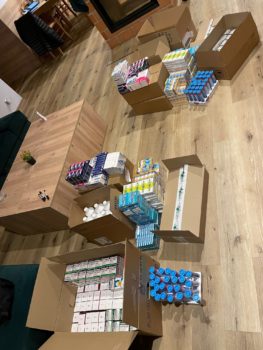
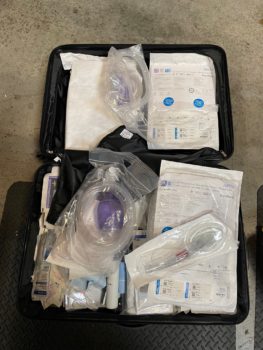
“It was really last-minute notice. I got approval from work to get the time off and I left one week later. We flew down to San Francisco to help gather the medical supplies from this giant warehouse, itemized all of the suitcases, went to the airport and flew to Slovakia,” Engelsvold said.
Over 20 suitcases were filled to the brim with first aid supplies like tourniquets, gauze, elastic bandages, burn and wound care, IV supplies, airway management and common medications. While in Slovakia, Engelsvold and the group she traveled with also purchased additional cases of medicine, baby formula and vitamins.
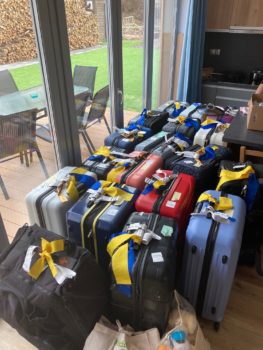
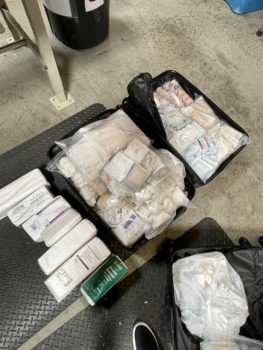
Support on both sides of the world
With attacks on large vehicles carrying humanitarian aid through Poland being widely reported, the team determined that partnering with NGOs on the ground would ensure that the medical supplies would ultimately reach their final destinations.
“It would have taken too long to ship the supplies, so the quickest and most efficient way to get these supplies to Ukraine was to personally travel with them on the airplane in the form of personal luggage. There was a need for small, grassroot movements from other areas of Ukraine to carry supplies in smaller vehicles to avoid attention,” Engelsvold explained.
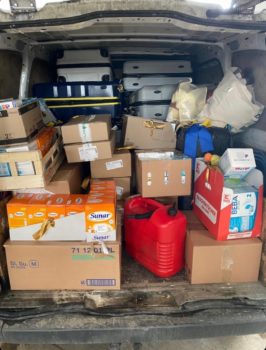
Her group followed their supplies to the Slovakian-Ukrainian border where it was picked up for transport by drivers from the non-profit organizations Grace Tea and Good Samaritan. The NGOs then successfully delivered the medical supplies equally to the southern and eastern areas of Ukraine.
Engelsvold said none of this could have been at all possible without the support she received on both sides of the world.
“The Cardiac Surgery Advanced-Practice Providers (APP) team was extremely flexible, covered my shifts and were instrumental in helping me go on this trip,” she said.
Engelsvold’s Heart Center colleagues also donated money toward the purchase of additional luggage, which made another major impact in the journey.
“It wasn’t just me doing this on my own, I had the backing of all my amazing coworkers. I truly felt like it was just one big team and that we were doing this together. That was just really special. I felt so supported by Seattle Children’s in this endeavor and it was a huge success largely in part because of my wonderful colleagues.”
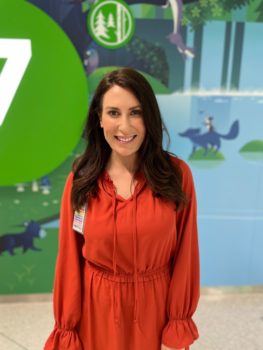
Resources
- Experience matters. Our team performs more complex pediatric heart procedures than any other providers in the region.
- Consistently ranked among the nation’s top cardiology and heart surgery programs, according to U.S. News & World Report.
- Heart Center – Seattle Children’s (seattlechildrens.org)
- MedShare – We improve the quality of life of people and our planet.
- Slavic International Association of Ministries “Good Samaritan”
- Grace Tea – Donate to help war victims in Ukraine

